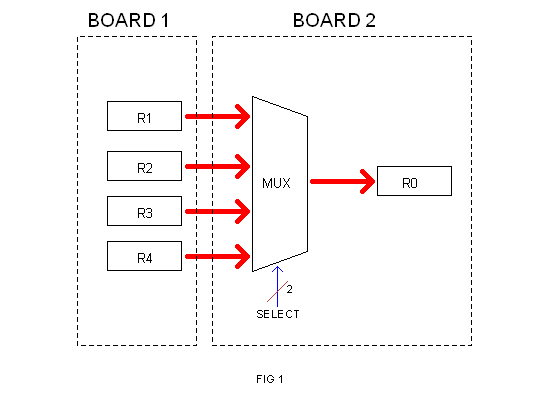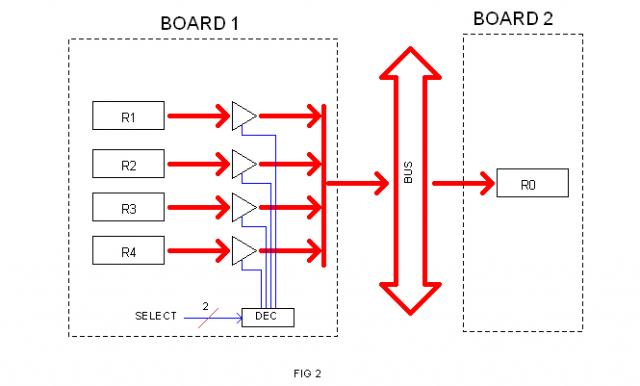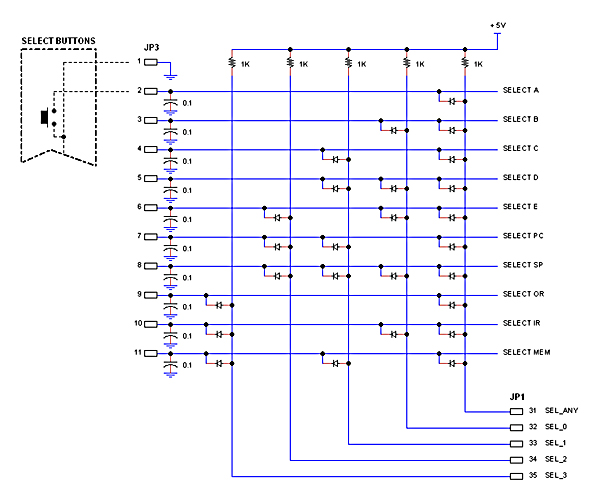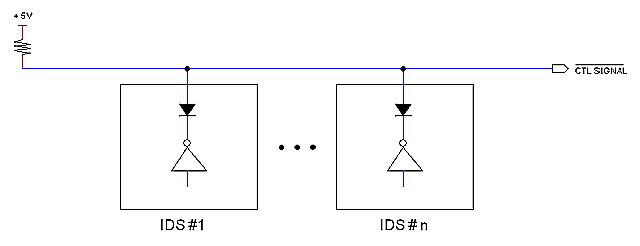Techniques empoyedThis section describes some of the different techniques employed to design the Heritage/1 circuits.
Buffers instead of Muxes
Multiplexers are usually employed to convey data from different sources into a single destination. Figure 1 shows an hypothetical example in which one of four registers (R1, R2, R3, R4) is selected to input a destination register R0.
If the sources and destination are placed in different boards as shown in figure 1, wiring could get expensive. For example, if each data path is 16-bits, then 64 wires would be required to interconnect the two boards.
Figure 2 illustrates a different solution. The MUX in BOARD 2 has been replaced with four 3-State buffers placed in BOARD 1. Now the selection is done in the source, not in the destination. An external BUS has been used to interconnect the two (and possibly others) boards. Consequently, only 16 wires are required.
This technique not only saves wires (and connector's pins) but it also allows for a more flexible and modular design. For example, a second 4-registers board could be added at a later time without having to modify neither BOARD 1 nor BOARD 2.
Extensive use of Diodes
Diodes Logic (some times regarded as "Micky-Mouse Logic") has been employed along history since first generation of computers (1940s). The following diagram illustrates a typical use: keyboard encoder. This circuit encodes the "Data Select" buttons of the CPU Console.
The image below illustrates another use of diodes in the CPU. As same control signals are generated in different Controller boards, a "Control Bus" (C-BUS) was employed to convey those. Then a wired-OR (actually built with diodes) was used to provide an inexpensive "distributed OR gate".
Hardwire Logic instead of Microprogramming
Heritage/1 decodes instructions using logic circuits, that is actual gates. This avoids the speed contraint imposed by microcode storage if Microprogramming were otherwise employed.
Decoding by pure logic is interesting since the design is made based on Boolean algebra rather than "intangible logic", allowing the designer to think as an electrical engineer instead of a programmer. It also matches the Heritage/1 design philosophy in the sense that "Software is external to the Machine" and as such it has to be loaded on a hardware that has full-started already.
In section Building sequences with combinatorial logic this techique is explained in general terms.
|





